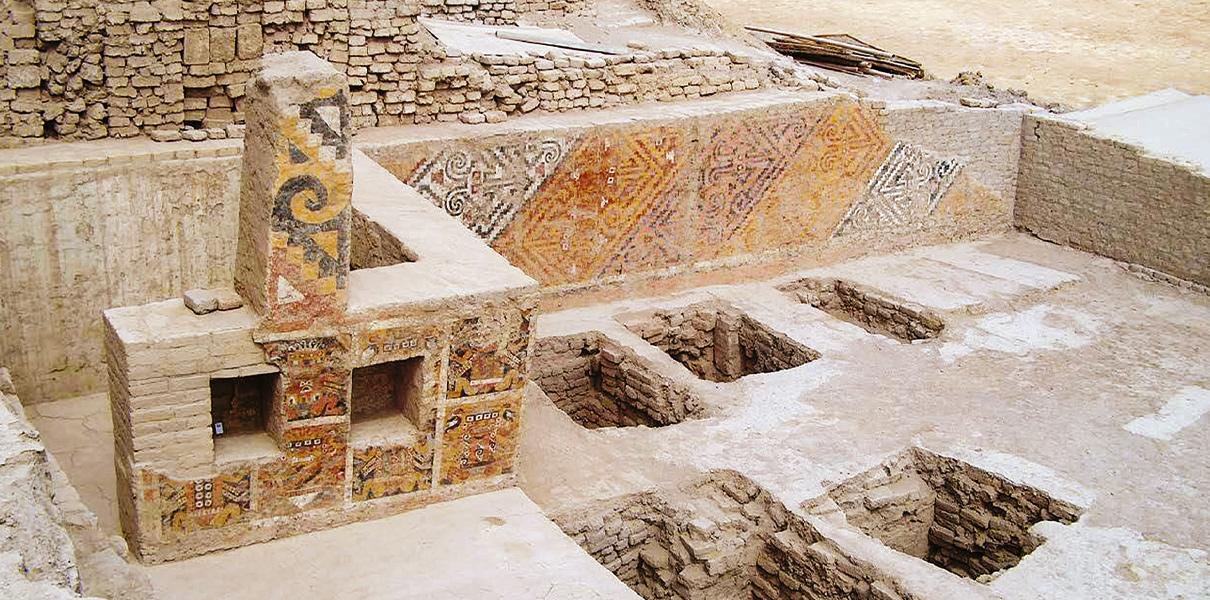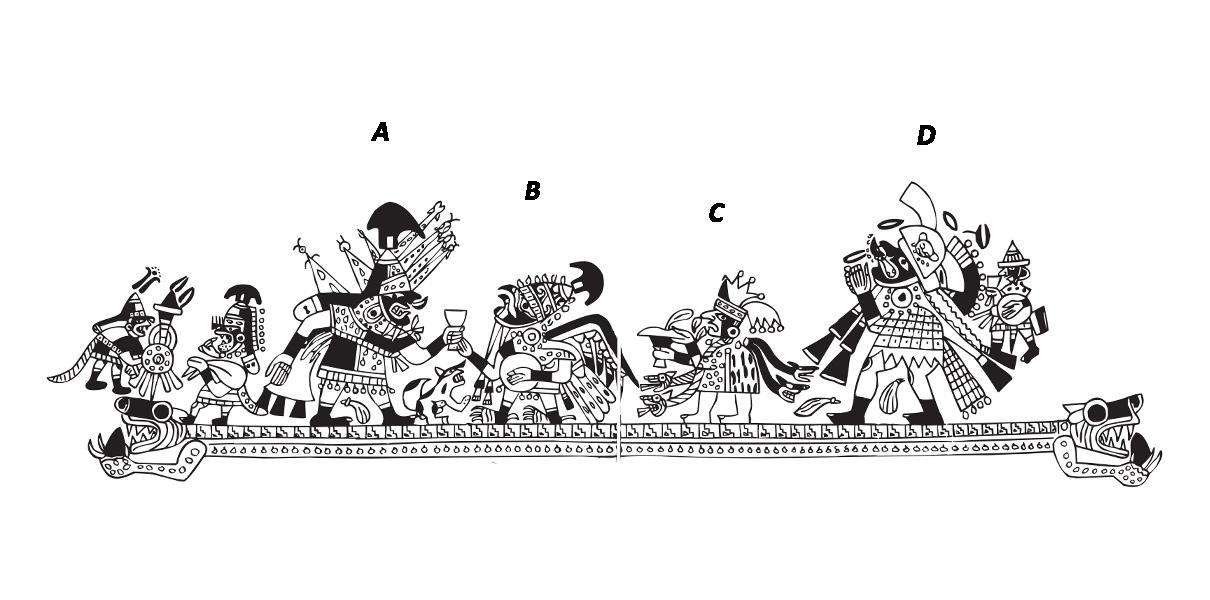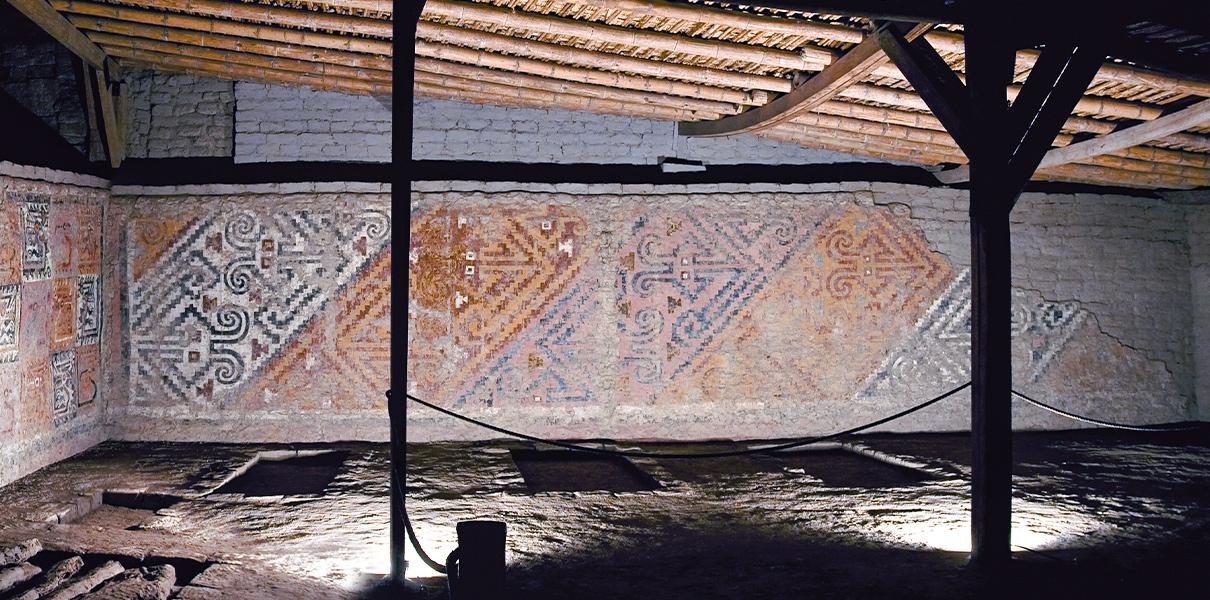- Visitors
- Researchers
- Students
- Community
- Information for the tourist
- Hours and fees
- How to get?
- Virtual tours
- Classic route
- Mystical route
- Specialized route
- Site museum
- Know the town
- Cultural Spaces
- Cao Museum
- Huaca Cao Viejo
- Huaca Prieta
- Huaca Cortada
- Ceremonial Well
- Walls
- Play at home
- Puzzle
- Trivia
- Memorize
- Crosswords
- Alphabet soup
- Crafts
- Pac-Man Moche
- Workshops and Inventory
- Micro-workshops
- Collections inventory
Students
Students
Story
The funerary context of the Lady of Cao

The tomb of the Lady of Cao is the first evidence of the burial of a female biological character of the Moche elite inside a temple of the same era. Anthropological studies allowed us to know that this woman, 1.48 meters tall, died when she was approximately 25 years old. The analyzes indicate that she suffered from an abscess in the wisdom tooth, that her death occurred in a postpartum stage, apparently due to eclampsia, and that her body was washed with seawater. Also, the hair-study allowed us to know that she consumed corn grains and marine products.
In addition to Tomb 3 which contained the bale of the Lady of Cao, four associated graves were found, containing at least six characters. In Tomb 1 an elite character named “Chief Priest” due to the inside ornaments of his bundle, was found. This was accompanied by a teenage individual dead by strangulation. Tombs 2 and 4 contained two male characters without major materials and offerings. Tomb 5 presented bone material from various individuals.
All these graves are located at the foot of the south wall of the Ceremonial Site and the west wall of the Corner Site, both profusely decorated by schematic representations of Pez Life (Fish Life) and Animales Lunares (Lunar Animales – rampant felines), respectively.
Roles and functions of the Lady of Cao

Bioanthropological studies revealed that the Lady of Cao died when she was approximately 25 years old and that her height was 1.48 meters. Likewise, the study of her hair revealed that she consumed corn grains and marine products.
But who was this woman? The insignia of power that accompanied her (crowns, tiaras, truncheons, nose rings, earmuffs), if worn by her character, would suggest her privileged status in the hierarchical composition of Moche society of the lower Chicama.
The similarity of their insignia to those of character D in the so-called "Sacrifice Ceremony" is surprising, a central theme of Moche iconography, which is also shared with the evidence from the tomb of the Lord of Úcupe, from the neighboring Jequetepeque valley.
In the narrative sequence of this ceremony, the blood of the executed prisoners is offered to the highest dignitary. Archaeological research has made it possible to identify these characters in their own tombs: character A, who is given the cup of blood, corresponds to the position occupied by the Lord of Sipán; character B corresponds to the Owl Priest, also buried in Sipán; character C corresponds to a priestess whose tomb was discovered in San José de Moro; and the character D, is compared with the Lord of Úcupe and with the Lady of Cao. The semi-divine investiture and political-religious authority of him is then recognized.
The presence of tattoos on the body, with figures of snakes and spiders (both animals linked to the fertility of the earth and water) and other elements related to the magical-religious, suggest that the Lady was engaged in very deep spiritual activities associated with quackery.
The ceremonial environment

It is a typically Moche ceremonial site, early according to the art displayed in it. It has walls finely decorated with images typical of the time, highlighting schematic representations of sea and river fish, analogous to the images of the patio below the Patio de los Frisos Marinos. Like all Mochica open spaces, it has a corner enclosure on whose walls the most remarkable images were captured: anthropomorphic beings with feline features accompanied by condors and snakes, the so-called "lunar animal", and stepped waves.